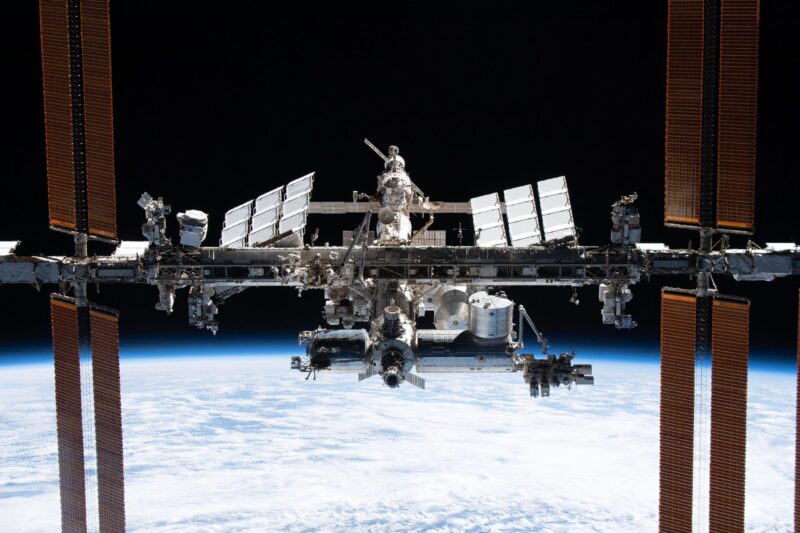
La station spatiale a été photographiée depuis le Crew Dragon Endeavour de SpaceX lors de son départ le 8 novembre 2021. Crédit : NASA Johnson
La station spatiale internationale est en orbite légèrement plus haute aujourd’hui, ce qui la place en position pour un échange d’équipage qui aura lieu en mars. Pendant ce temps, les sept membres de l’équipage Expedition 66 ont participé à des recherches en sciences de la vie et en physique ainsi qu’à diverses activités de robotique.
Le vaisseau cargo russe Progress 79 de l’ISS, amarré à l’extrémité arrière de la station. Module de service Zvezdaa allumé ses moteurs tôt mardi matin pendant deux minutes et 22 secondes. La manœuvre orbitale a permis de booster l’orbite de la station de six dixièmes de mile en préparation de l’arrivée du vaisseau d’équipage Soyouz MS-20 à la mi-mars ainsi que du départ du trio Soyouz MS-19 le 30 mars. ;” data-gt-translate-attributes=”[{” attribute=””>NASA astronaut Mark Vande Hei will be returning to Earth inside the Soyuz MS-19 crew ship completing a NASA single spaceflight record-breaking mission of 355 days.
Today’s science schedule aboard the orbiting lab covered a wide variety of subjects exploring phenomena benefitting astronauts in space and humans on Earth.
NASA Flight Engineer Thomas Marshburn configured the Combustion Integrated Rack to begin operations for a pair of studies exploring fire growth in microgravity. Marshburn also took a robotics test for the Behavioral Core Measures investigating how living in space affects crew stress, performance, and behavior. ESA (European Space Agency) astronaut Matthias Maurer watered and photographed plants growing for the Veggie PONDS space agriculture study.
NASA astronaut Kayla Barron set up an Astrobee robotic assistant to collect visual data and create a localization map inside the Harmony module. She also joined fellow NASA Flight Engineer Raja Chari and reviewed spacewalk responsibilities and configured spacewalk tools. Vande Hei swapped samples and cleaned the inside the Electrostatic Levitation Furnace, a research device that enables the observation of thermophysical properties at high temperatures.
In the station’s Russian segment, Commander Anton Shkaplerov joined Flight Engineer Pyotr Dubrov and studied how the heart and circulation system adapt to weightlessness. The duo from Roscosmos also partnered together on cargo activities and air repressurization activities inside the Progress 79 vehicle.



